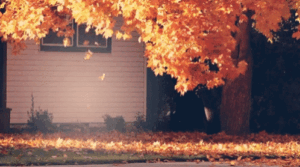 Why Do Trees Lose Their Leaves – Depends on what your interests are. Watching the leaves slowly change colors and progressively fall over the year can be strangely beautiful.
Why Do Trees Lose Their Leaves – Depends on what your interests are. Watching the leaves slowly change colors and progressively fall over the year can be strangely beautiful.
While the weather might change and the skies may grow darker or more cloudy, it is only when you see the leaves on trees fall away that it becomes clear that we’re heading for the winter season.
Of course, changing seasons and temperatures aren’t the only reason that leaves may fall from trees. You can also run into situations where you’re dealing with trees that are sick, leaf falling acting as a symptom of very real sickness. There’s also a chance that the tree is dealing with a fungi infection or excessive soil conditions. There’s a surprisingly extensive number of different reasons a tree may shed its leaves. Below are six of the most common reasons a tree may lose its branches. Check to see what makes the most sense for the trees in your immediate area when they start to shed their leaves.
REASON #1. WEATHER CONDITIONS & CHANGES
Arguably the most obvious of the different factors behind a tree’s overall health, as mentioned before, when the weather conditions are warmer and closer to spring and summer, leaves are going to be stronger and more vibrant. On the other hand, as things get colder and chillier, you can expect leaves to start falling. The same is true for sunny days compared to overcast and rainy days.
REASON #2. OVERLY WET/DRY CONDITIONS
You also have to consider that, along with the weather itself, the general conditions surrounding the tree may also result in its leaves falling. As an example, while spring showers are great for nourishing plants and trees with water, if things go a step too far, you can expect things to go the exact opposite way. This can be an example of plants and trees being “overwatered”.
REASON #3. PESTS & INSECTS
Whether it’s an insect infestation or a fungal infection, you’re liable to see some trees suffer from unwanted inhabitants. This is very common, especially during the springtime seasons due to a large amount of rain and subsequent dampness. These organisms and pests regard these trees and their leaves as a viable food source, eating as much of the structure as they can, the leaves falling often being the first sign that the tree’s health has become compromised.
REASON #4. ENVIRONMENTAL STRESSORS
A surprising inclusion that many wouldn’t expect, if a plant is continually uprooted and replanted, the stress of this repotting can result in its leaves beginning to fall away. This can happen anywhere, including when taken from inside an environment to outside of it. Similarly, things like too much water or sun can also stress a plant to the point of causing it to shed its leaves.
REASON #5. DISEASES
A big factor that describes the falling of leaves is the existence of illness and disease within the tree itself. While their diseases may not always translate to ours, trees are living entities as well and, as such, can get sick when exposed to certain diseases. While these diseases can be treated if caught in time, as with humans, that may not always be the case. One of the first signs that a tree’s health is compromised, and that it may suffer from the disease is the premature falling of leaves.
Based on the nature of the plant and disease, how the leaves fall can vary:
LEAF SPOT: One of the more immediately common reasons for premature leaf falling, Leaf Spot is generally contracted through either bacteria and viruses, air pollutants, or pathogenic fungi. The illness transmits from one leaf and progressively spreads throughout the branch before infecting the tree itself. As the name implies the disease leaves a telltale symptom of spotty leaves before falling to the ground.
POWDERY MILDEW: A plant disease that causes mildew growth to spread along the surface of a plant’s leaves. This disease is caused by a specialized race of fungi and grows in places with high humidity and reduced airflow.
ANTHRACNOSE: Another big reason why plants and trees lose their leaves, Anthracnose causes any infected leaves to grow distorted and curled before ultimately dropping well into the spring where they should normally be growing. Leaves with this disease generally have dark tan and brown spots that appear as the leaves mature.
